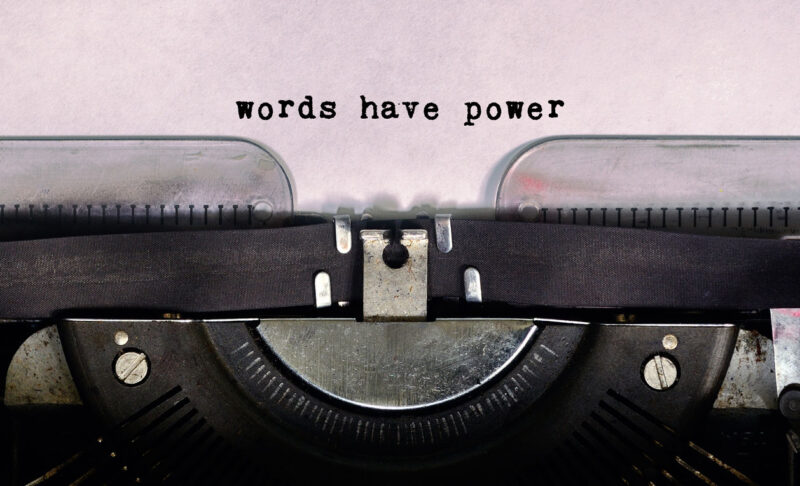Blog Short #123: How to Ask for What You Want

Photo by fizkes, Courtesy of iStock Photo
Sometimes asking for what you want isn’t easy. It can get complicated. It depends on what it is, its importance, and who you’re asking.
Today we’re going to go over the factors that get in the way and how to handle them, along with some basic strategies you can use to make your requests stronger, more precise, and more likely to get a favorable response.
Let’s start with five psychological factors.
Five Things to Consider Before You Ask
1. Clarity
What exactly are you asking for?
You can’t successfully get a response if you don’t first know clearly what you want and why you want it.
There are two types of requests. Knowing about these will help you sort out what you want. They are:
- Acknowledgment
- Action
There’s a request in every communication, and that request is for acknowledgment. When talking to someone, you want some indication that they heard you. This is true whether you’re asking for something specific or just chatting.
If you walk into a room and say hello to someone, you expect some acknowledgment – either they say hello back, nod, or indicate they heard you speak.
There’s a request in your “hello.” If no one looks up, speaks, or indicates you’ve entered the room and spoken, you feel rejected and likely invisible. Your unspoken request for acknowledgment has been denied.
If you walk into the room and say hello, followed by a request for help to figure out a financial statement you’re working on, you’ve asked for both acknowledgment and action.
All this means is that when thinking about what you’re requesting, know how much of what you want is acknowledgment and how much is action. What specifically do you want? You need to be committed to that before you can ask. If you’re wishy-washy and aren’t committed to what you’re asking for, you’ll likely get a lukewarm or mixed response.
2. Believing
Do you believe you deserve what you’re asking for?
If you don’t, that will come across.
Have you had someone ask you something and then qualify it by saying, “You probably don’t have time for that,” or maybe “I shouldn’t ask,” or perhaps they avoid eye contact, fidget around, and look like they’re ready to dash for the door?
If you really think you shouldn’t ask, then don’t. But if that’s just another way of saying you don’t deserve what you’re asking for, you should think that through before asking.
It’s important to feel confident that you deserve what you’re asking for and not asking for too much. Your confidence will help to get a positive response or at least more conversation about what you need.
3. Cost
What’s it going to cost you?
If the request is simple, there may be no immediate cost.
If you ask your partner when he goes into the kitchen to bring you a soda on the way back to the living room, there’s no immediate cost. There is an expectation, however, that you’ll both do little things for each other like that when requested.
If you ask to be chosen to chair a committee working on a philanthropic project, the cost will be the time, work, and effort you’ll need to put in.
If you want your partner to agree to remodel your kitchen, the cost will be losing a place to cook and prepare meals for the time it takes to get the work done.
There’s always a cost. Know that before asking.
4. Expectations
Are your expectations too narrow?
Strangely, sometimes what you ask for, you get, but not in the way you imagined it. It comes from another source, much later, or as part of something better than your original request. You have to have some faith. And you may need to ask more than once.
5. Fear
What might you be afraid of?
Possibilities are fear of:
- Rejection.
- Getting what you want and it not living up to your expectations.
- Having to pay the price for getting it.
- Making a mistake and asking for the wrong thing.
- Not getting it in the time you need it.
Consider all these and do your homework as best you can, but once you feel confident in your request, don’t let fear keep you from asking.
If you’ve carefully considered your true wants, the price of getting it, and your expectations, and you still want to go forward, then go. You can always make changes. Don’t get into an all-or-nothing mindset.
How to Ask
Now let’s go through strategies that will get you the best results.
1. Be clear and direct.
No matter the request, be direct. Spell it out and say exactly what you want, when you want it, and how you want it. Avoid hinting, and don’t leave anything dangling that confuses the other person about what you’re asking. By all means, don’t expect someone to read your mind, even if it’s your partner who knows you well. Make your requests as straightforward as possible. Directness builds trust.
2. Ask with confidence.
Be concise and avoid offering a defense for what you’re asking. Sometimes people get defensive when asking for something before anyone questions their request or desire. Obviously, if you ask for a raise at work, you’ll want to give a concise summary of why you deserve it, but even then, be careful to keep any hint of defensiveness out of it.
3. Be specific.
Global questions get poor responses. They’re fine for open discussions or philosophical debates, but you need to be specific to get something specific. Spell out any pertinent details.
4. Assess receptivity.
Consider who you’re asking and what you think the level of receptivity will be. What might they need to know, and will they be interested in helping? You may also know upfront what you could reciprocate that would feel like a win-win to everyone.
I’m not suggesting you manipulate, but rather be mindful of the person you’re asking and how they might receive your request. Above all, be respectful even if the answer is no.
5. Choose a good time.
As much as you can, select a good time to make your request.
For example:
- Asking your partner to help you solve a messy problem before you both retire for the night is terrible timing.
- Asking your boss for a raise when he’s preparing for an important talk is also poor timing.
Other considerations are don’t approach someone when they’re distracted, overly tired, or overwhelmed. For important requests, ask ahead when a good time would be to discuss your request.
When You Get a “No”
When you get turned down, take some time to regroup and ask yourself these questions:
- What might I do instead? What are the alternatives?
- Is there someone else I can ask or another source of help for what I need?
- Should I let this go for now and wait and see what develops?
- Might I ask again at a later time?
- Are there some steps I can take on my own to work toward the goal I want to achieve?
There isn’t always an immediate solution. Sometimes you need to have faith that what you want (if it’s something that’s good for you), will come around in its own time. That doesn’t mean you give up. It means you keep yourself open to unexpected developments that push you in the right direction.
Sometimes taking small steps brings on those bigger payoffs.
Asking gets the ball rolling, even if it rolls in a different direction than you thought it would.
That’s all for today.
Have a great week!
All my best,
Barbara








